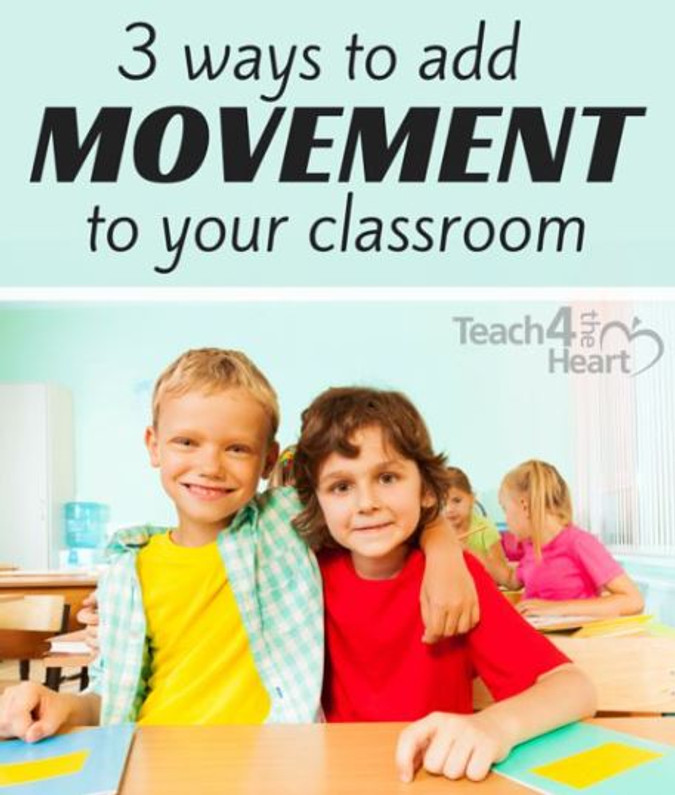Using Movement to Engage Students
Use Movement to Engage Your High School Students
Would you like to engage your students more and change up the routine? Get them moving!
Once our students enter high school we tend to expect them to sit still and focus for longer - and they absolutely should be able to do that. But we have to remember that they’re still kids. Picture yourself sitting in a boring professional development meeting and feeling restless and bored. Yet we often do the same thing to our students. I’ve gathered some strategies that you can use to get your students up and moving around the classroom.
1. Set up stations and have your students rotate around them.
Stations aren’t only for elementary school! I taught Freshman Biology and other science classes for 31 years, and my students loved stations! Science lends itself quite well to stations but they can absolutely work well in any subject.
Your stations don’t have to be elaborate. Try putting an informational text article at one station with some analysis questions. Students can use notebook paper to answer them or you can give them an answer sheet. The article shouldn’t be too long since students will have to complete it in the rotation time.
Another station could use technology … perhaps a short video or a lab simulation. Other station ideas are sorting activities, foldables, or review problems. You could even set yourself up as a station and do a short lesson with small groups or reteaching for students who are struggling.
One tip for stations … make sure to have more than one of each station set up to avoid bottlenecks!
2. Gallery Walks
Gallery walks are similar to stations, but there are usually more stops for students to make. I loved to set up gallery walks after my students had completed some sort of project. They really seemed to enjoy looking at each others’ work. Try giving them a simple rubric that they can use to “grade” each other.
I’ve also used gallery walks as lessons. For example, I put up 20 color pictures of organisms around my room. Students had to examine each one and determine whether they were producers or consumers and, if they were consumers, what type of consumer they were based on informational text next to each picture. You know it’s a good lesson when students exclaim “I can’t believe how fast this class went!”
3. Agree - Disagree
This strategy works very well in science classes, but could definitely be used in other subjects as well. Here’s how it works.
Before class, tape up signs around your classroom that say “Agree Strongly,” Agree Somewhat,” “Disagree Strongly” or “Disagree Somewhat.” Try to put one on each wall.
Students are given a sheet with several statements. For each statement, they have to circle whether they “agree strongly,” “agree somewhat,” “disagree strongly” or “disagree somewhat.” In biology, I tended to use statements about controversial topics (but not TOO controversial!). For other subjects you could write statements about correct procedures for math problems, analysis of a piece of literature for ELA or historical documents for Social Studies. I’ve even done this with review questions and put up numbers for 1, 2, 3 or 4 to match multiple choice questions!
Give the students a few minutes to independently circle their opinions.
Then have the students go and stand under the sign that matches the opinion they circled for the first statement. Take a few minutes to talk about why they chose to stand where they did. Then move on to the next statement. Or, if this is review, talk about why the wrong answer is incorrect.
These are just a few strategies I’ve used to get my students up and moving. I hope you find one that you can try in your classroom.
Debra Thivierge McFadden
Recent Posts
-
From Whiteboard to Algorithm: How Tutors Can Use AI to Boost Student Results
Source: unsplash.com Teaching Enters Its AI Era What if your sharpest teaching assistant never slep …Jun 9th 2025 -
Remote Teaching Jobs for Certified Teachers | Work from Anywhere
Guide to Remote Jobs for Certified Teachers In this changed world, education is no longer tied to th …May 27th 2025 -
Tips for Online Learners
Tips for Online Learners: How to Stay Focused and Succeed in Earning Your Degree Online Studying fr …Apr 7th 2025



